Art Print Native American Girl in Front of Fire Image
ane / fourteen
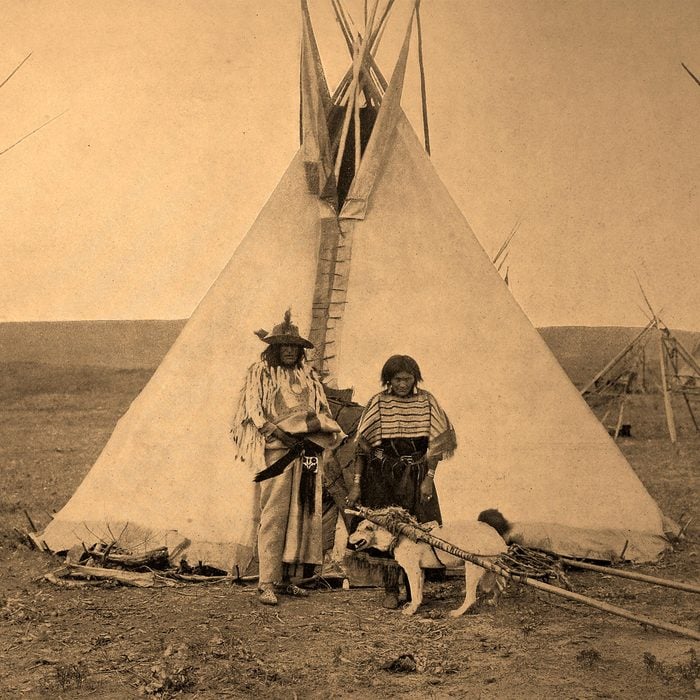
Native American Heritage Month
November is Native American Heritage Calendar month, which is besides referred to every bit American Indian and Alaska Native Heritage Month. There are more than 570 federally recognized tribes in the United States. The National Geographic Encyclopedia of American Indian History and Civilisation gives an inside glimpse into the by and present of North American Indigenous tribes and the practices they hold beloved. While all of them accept dissimilar rituals, in that location are several traditions that cantankerous boundaries and take significant to members of multiple nations. Here are a few examples of the traditions that are treasured past some in the Native American community. Chances are, you didn't acquire these 15 other facts well-nigh America in school.
2 / 14
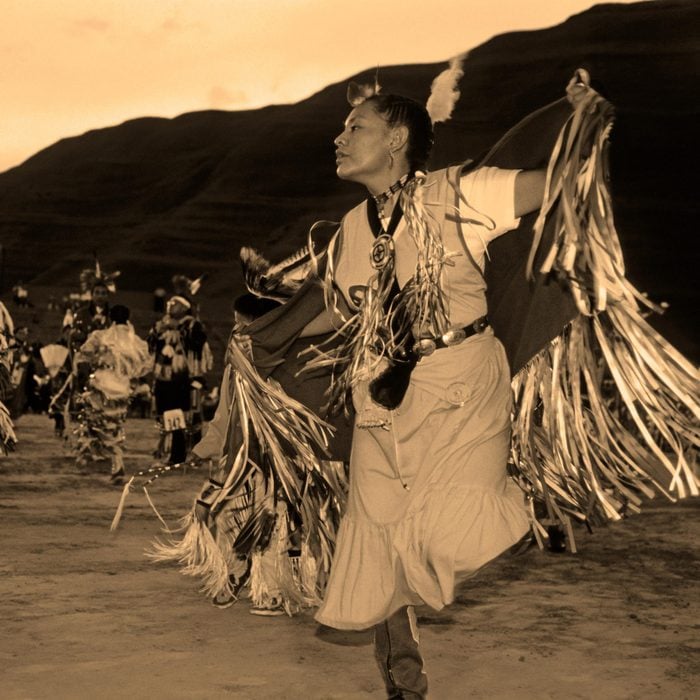
Pow wows
Pow wows began every bit a way for nations to come together to celebrate success in hunting or battle. Today, they are an opportunity to share tradition and reconnect to culture and family; trip the light fantastic toe plays a big role in pw wow ceremonies, as does drum music. The term "pow wow" comes from the Narrtick word for "medicine human being," pau wau. (Narrtick is the language spoken by the Algonquian people of Massachusetts.) In the 20th century, pow wows were advertised to be "authentic" displays of Native American traditions for not-Native spectators. Later World War I and II, the pow wow became a way to honor American Indian veterans of war. Today, intertribal pow wows are an opportunity to reconnect with family, other tribes, and the earth and they are intended to reclaim the of pride and ability, too equally a celebration of life. The Gathering of Nations in Albuquerque is the largest pow wow in North America, with over 700 tribes gathering to gloat. Pow wows are open to outsiders—here is one offset-timer's experience as a spectator.
3 / 14
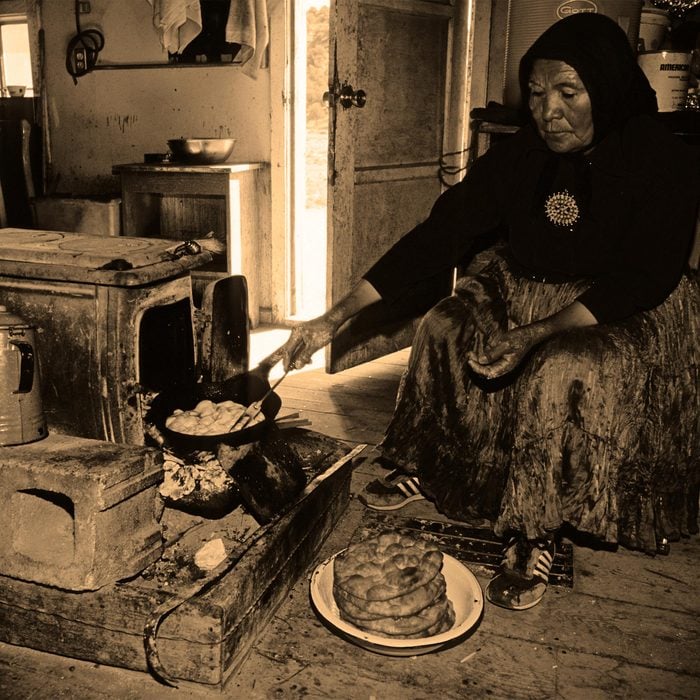
Frybread
With so many dissimilar tribes of Indigenous people in the United States, traditional foods vary from region to region. Only certain favorites have emotional and historical significance; one such food is frybread, a 144-yr-sometime traditional Navajo recipe that has a painful origin. When Navajos, or Diné, equally they telephone call themselves, were beingness forced off of their land past the U.S. Government, they were given meager supplies to forbid starvation while on their 300-mile relocation. Flour and lard were given equally rations on the "Long Walk" from Arizona to New Mexico. Those ingredients led to fry bread, which is a large, fluffy, plate-size piece of fried dough. Although it's a traditional nutrient that is found at pow wows and around kitchen tables, it has been the focus of some controversy. Frybread is not nutritionally healthy and is rooted in oppression. Then those in the indigenous community may have different feelings about whether or not it's comfort food. Healthy or not, comfort nutrient is hard to resist—here'due south your guide to the best American comfort nutrient in every state.
four / 14
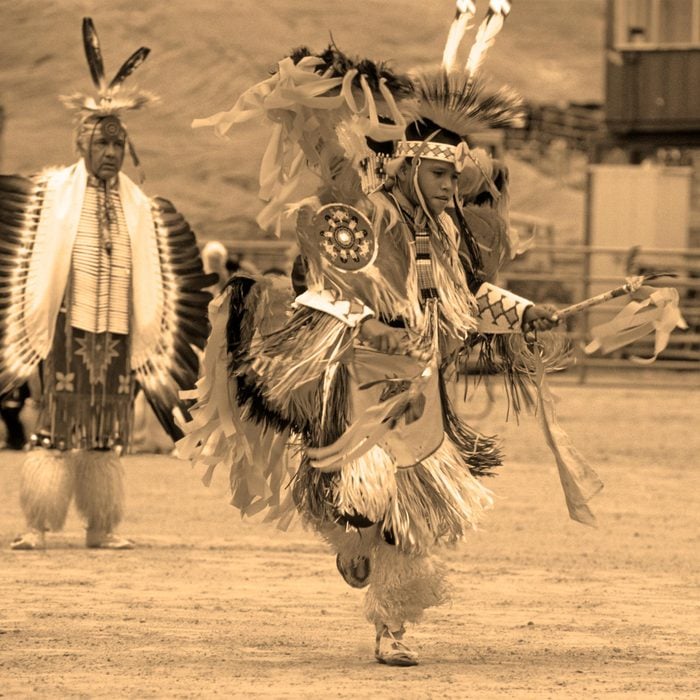
The stomp dance
The stomp dance is a love tradition expert primarily by Eastern Woodland and Southeastern tribes, including the Muscogee, Euchee, Cherokee, Chickasaw, Choctaw, Delaware, Miami, Ottawa, Peoria, Shawnee, Seminole, and Natchez tribes. They have place during the height of crop season and are ofttimes skilful on stomp grounds around a fire if weather permits. It's called "stomp" dance because the pattern of movement is a stomp and shuffle in a circle. Like many Native American traditions, at that place is quite a chip of symbolism with the stomp trip the light fantastic toe. The fire in the center represents the light of the sun, which is considered life-giving and sacred. Dancers arrange themselves in a circle and move counter-clockwise, alternating men and women like links in a chain, with children trailing the finish. The dance is virtually like a moving prayer, bringing together generations and uniting the community. Notice out how every state got its proper noun; many are rooted in the Native American language.
5 / 14
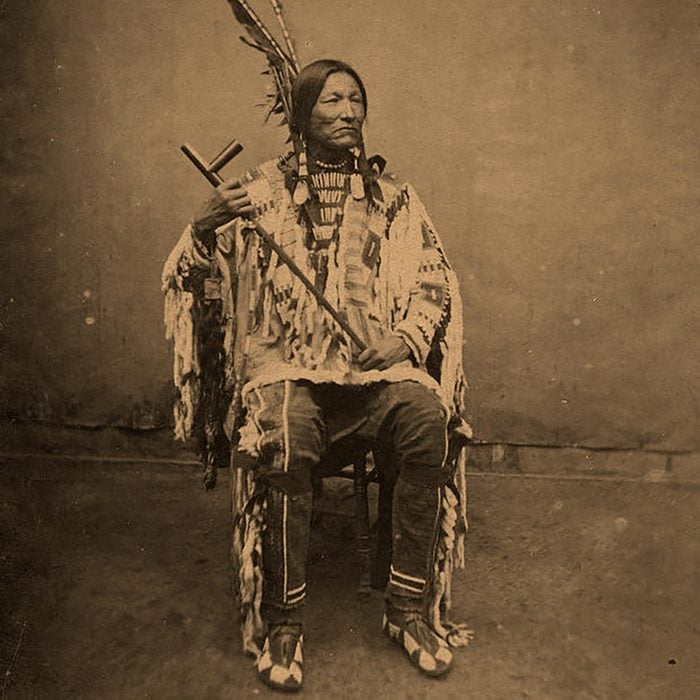
Governing principles
Each tribe had laws, leaders, and policies before the colonizers forced them to integrate beginning in the 18th century. Few know that the The states Constitution is based on the Iroquois Constitution, also known as The Great Law of Peace, shares the Field Museum in Chicago. Our Founding Fathers, including Benjamin Franklin, were in contact with the leaders of the Iroquois Confederacy, and they were invited to speak to the Continental Congress in 1776. In 1988, the U.S. Senate recognized the Great Law of Peace as an inspiration for the United states constitution, stating, "The confederation of the original thirteen colonies into one republic was influenced past the political system adult by the Iroquois Confederacy, as were many of the autonomous principles which were incorporated into the constitution itself." Learn the truth backside x other myths well-nigh the Constitution most Americans believe.
half-dozen / fourteen
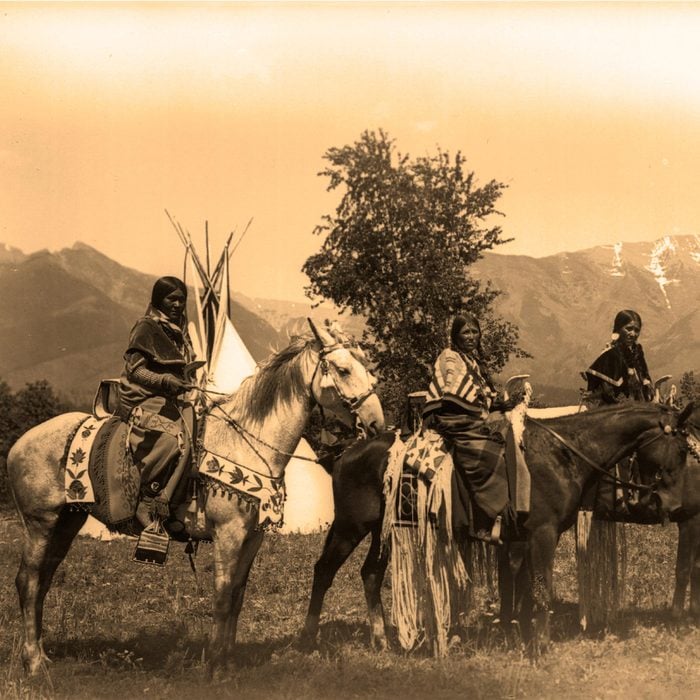
Gender roles and leadership
Although each tribe has their own views on leadership, patriarchy is not always the prevailing hierarchical model. In fact, many tribes are matriarchal, placing of import significance on the roles of women in leadership, counsel, and boxing. Mother Earth is regarded as sacred. Diana Parton, a citizen of the Caddo Nation and a descendant of the Euchee tribe, says it'due south important to her that people realize that women in many tribes are non subservient to men. "Women hold leadership positions and share equal amounts of responsibility within the tribe," says Parton. She mentions this is i reason information technology's and then disturbing that there is ongoing violence confronting Indigenous women. She points to the importance of the Coalition to Stop Violence confronting Native Women. The Department of Justice states that Native American women feel murder rates at 10 times the national average. These are xvi unavoidable facts nigh domestic violence.
seven / 14

Wampums
Wampum is a beaded belt that serves every bit both a work of art and a recording of history. The belt is not to be worn, it is instead a symbol of events, treaties, and union between two nations. Wampums were originally synthetic of purple and white clamshells but were afterwards fashioned from beads after the European settlers brought them to the colonies. Intricate beadwork is now a cultural artform crafted by Native American tribes throughout North America, but the wampum holds special significance for what it represents. Native artwork and artifacts requite us clues most how Indigenous people lived as these ten stunning examples show.
8 / 14
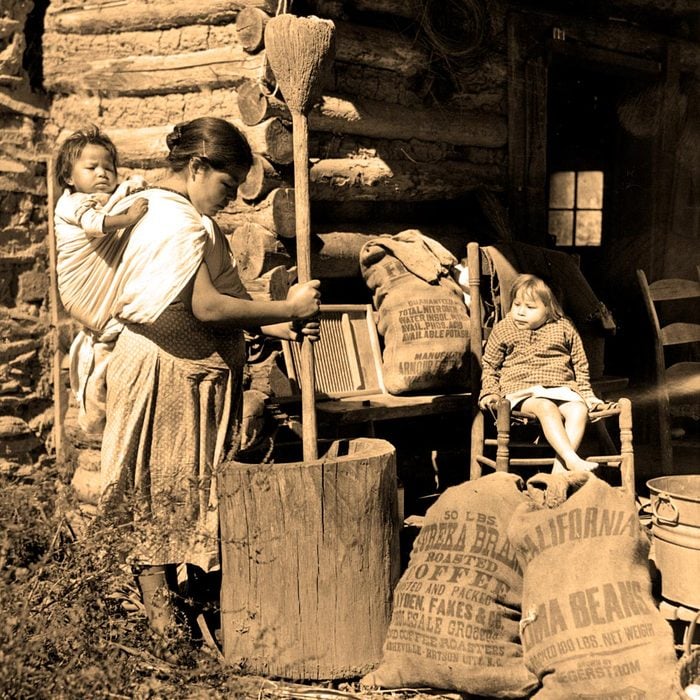
Grape dumplings
A traditional dessert prepared by citizens of several nations is grape dumplings, a deep imperial, juicy pastry dish. Wheat flour creates the dough that makes the dumplings, which are rolled out to be thin. They are then doused in hot concord grape juice and carbohydrate for 10 to 12 minutes and served hot frequently with a side of ice cream. These night purple dumplings have a sweet gustatory modality that is reminiscent of abode for many Native Americans. They audio like a delicious dessert after a large turkey meal with all the trimmings.
ix / 14
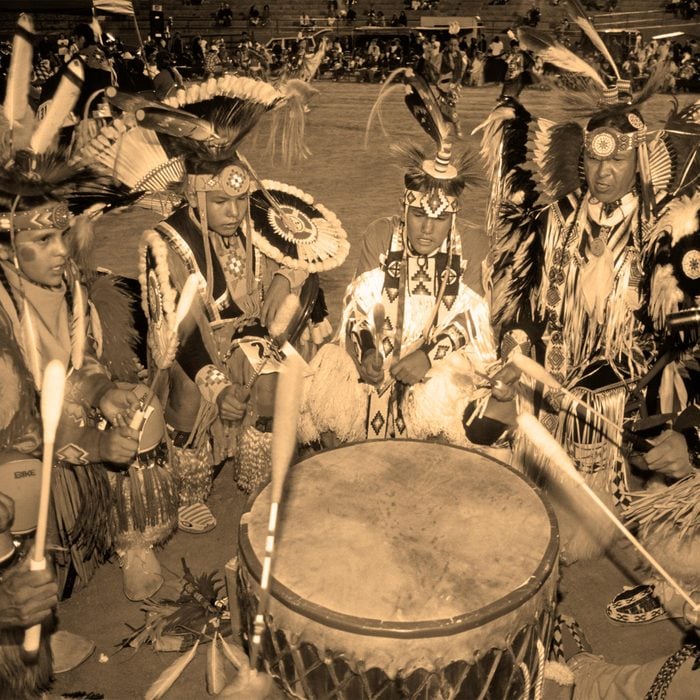
Drum circles
Pulsate circles are common in ceremonies for many nations and people. The rhythmic beat of the drum represents the heartbeat of Mother World. Native Americans believe that the chirapsia of the pulsate is a uniting strength, bringing together people of different tribes, likewise as uniting a person's spirit to their body and heed. The drum is treated with high respect and is considered sacred. "If y'all take intendance of the drum, it volition take care of yous. It'southward like going to church. You lot sit downwards and pray to God, the creator," says Rusty Cozad, a citizen of the Kiowa tribe. Traditionally, men do the drumming, just women ofttimes participate in the singing within the circle.
10 / 14
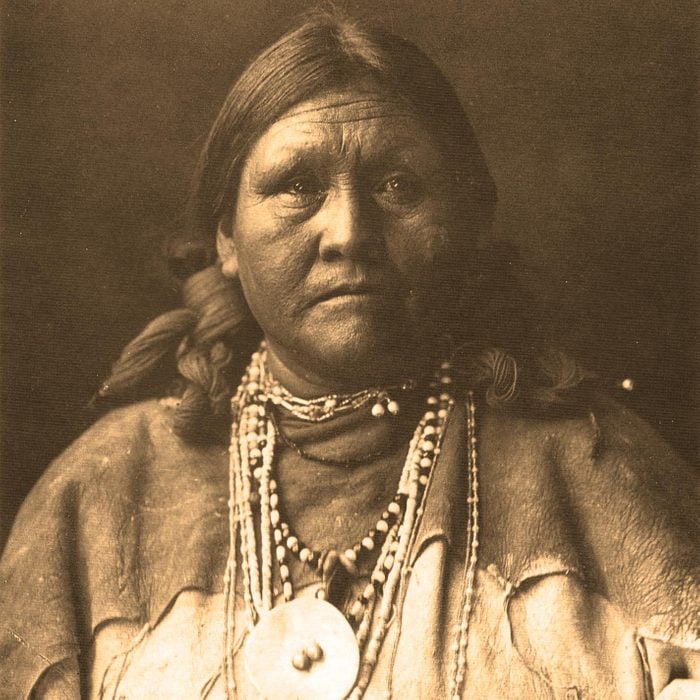
The ascension of Indigenous People's Day
Although Native American Heritage 24-hour interval is a standing civil holiday that has been recognized since 2009, the rise of Indigenous People'due south Day equally a federal holiday too has keen significance to some in the Native American community. It's celebrated in place of or alongside Columbus 24-hour interval, which has get controversial as more people recognize that Columbus was non the hero he was lauded to be.
11 / 14

Kinship
Although different tribes and nations concord unlike beliefs and principles, the exercise of kinship remains important for many Native Americans. Kinship ties are the system that determines what gets passed down from generation to generation. This includes things of a practical nature, like land buying and succession in leadership roles, but also includes the passing on of wisdom and teachings. Parton says that aunts and uncles have a special responsibility to their nieces and nephews. For example, her aunt instilled in her the traditions of the Caddo Nation and their meaning. "It's kinship that has sustained our customs," she says. "This is a beautiful part of our civilisation because information technology ways that everyone has support." Damon Clark, a member of the Navajo tribe, agrees. He emphasizes the thought that relationships and kinship are necessary for overall health. "Relationships provide the structure within our lives. It's of import to have relationships with our family, with our people, with the animals, with the earth, and with ourselves." Clark says that holding elders in high regard is too a honey and of import tradition of many Ethnic people. "It'southward important to know your place in your family and on the earth." Yous'll want to know the 17 secrets of happy families.
12 / 14
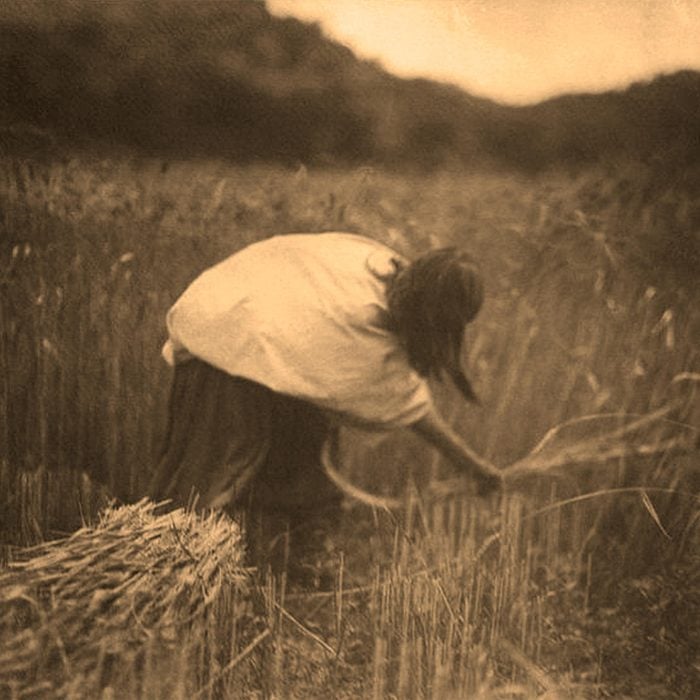
Agriculture and connection to the globe
Many Native tribes emphasize the importance of closeness with nature and a reverence for the globe and all its creatures. The Zuni people of the Southwestern United States hold a long lineage of successfully farming and raising livestock introduced past the Spanish. Curtis Quam, cultural educator at the A:shiwi A:wan Museum and Heritage Eye in Zuni New United mexican states and a member of the Zuni tribe, shares that agronomics has sustained the culture of his ancestors for years. "This is a part of our history; this is a office of who we are. Seeds are an important office of life, of culture, of everything." Quam says that the purity of seeds, soil, and the weather with which crops are grown are important factors to food production that many overlook today. The Zuni people consciously plant heirloom seeds to grow crops. With 92 percent of corn now being genetically engineered, Quam says it's important to teach future generations about the benefits of growing and planting food at home. "We hold corn and seeds in high regard," he says. He'south teaching his daughters to institute and to appreciate the food that the globe offers. "It'due south important to know how fresh food tastes and I desire my daughters to accept that experience." Observe out 21 things you didn't know most organic food.
thirteen / fourteen
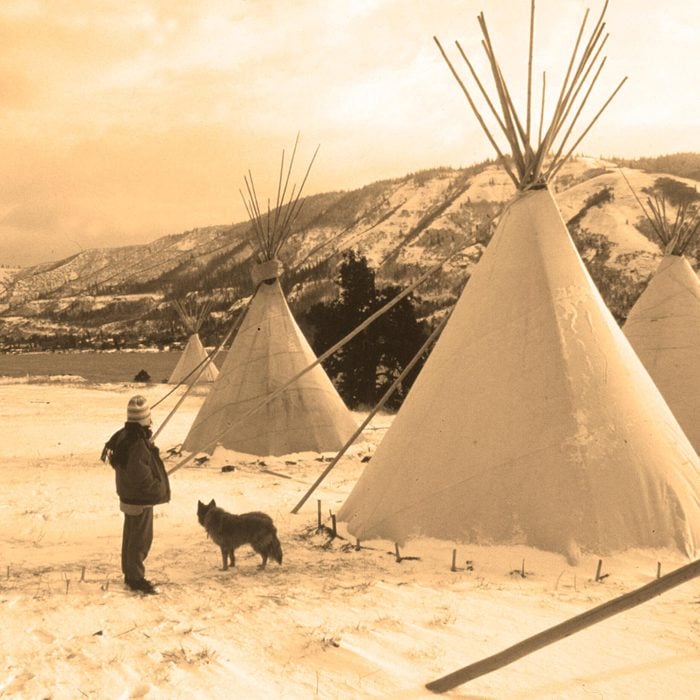
Preparing for winter
The Navajo people, or Diné, value the survival skills that come from living off of the country, especially in the cold winter months. For Diné, the New Year begins in Oct or Gháájí'. During the fall of the beginning snow, young people are taught to roll effectually in the snow, a ritual that prepares them for the cold winter months alee. "Rolling in the snowfall prepares our bodies, minds, and spirit for what we must endure during the winter," says Clark. As a recent college graduate of Harvard, he admits that his classmates had questions almost the ritual when he first did information technology in Cambridge, simply Clark didn't listen. "That connectedness to the earth, family unit, and customs is a privilege." These 14 winter survival tips from the coldest part of the country will assistance you lot survive the season.
xiv / 14
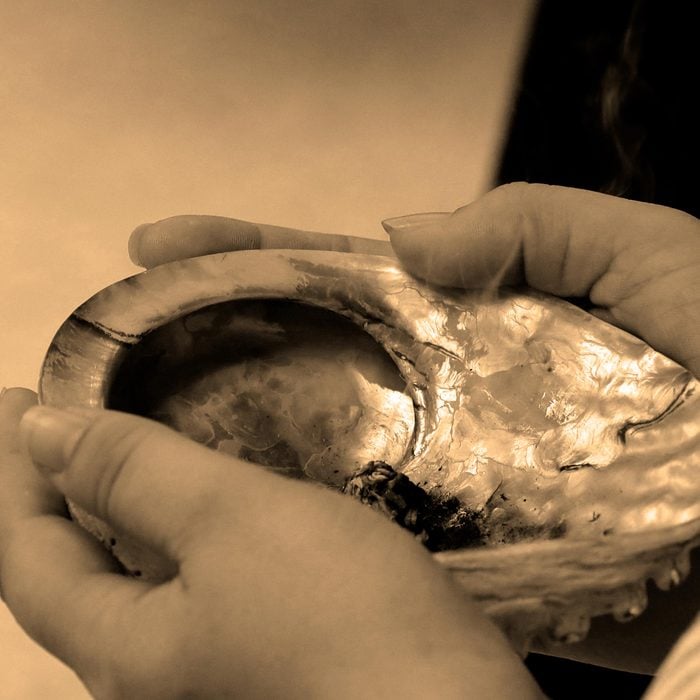
Smudging
Ane ritual that remains dear to Indigenous people of many nations is the ritual of "smudging." Herbs like sage are burnt and placed in a smudge bowl. This is a fashion to offering a approving and to spiritually purify an area or gathering. Asha Frost, an Anishinaabe medicine woman who practices some of the teachings of her ancestors as a healer, says that smudging is an of import mode to begin a healing gathering. She says she often does circumvolve work with her clients to assist them "come dwelling house to themselves." "When we sit in the circle no one is ameliorate or worse than anyone else," she says. "Nosotros belong to the earth, we belong to the animals and nature." This and other rituals accept besides helped her reclaim the aspects of her culture that previous generations of her family were discouraged from embracing considering of racism and the need to assimilate. "I'm guided by my ancestors. I retrieve who I am and I walk without shame." If you like the sound of that, you'll want to know the best essential oils for every room of your home.
Originally Published: October 30, 2019
Source: https://www.rd.com/list/native-american-traditions-and-beliefs/
0 Response to "Art Print Native American Girl in Front of Fire Image"
Post a Comment